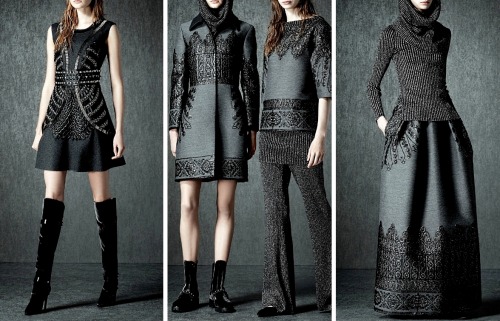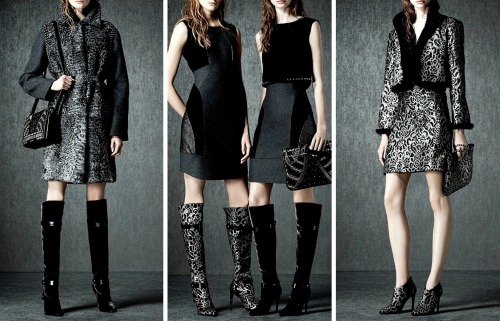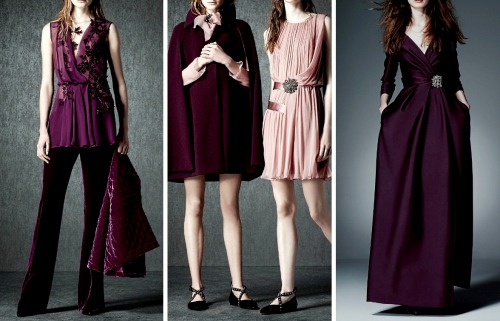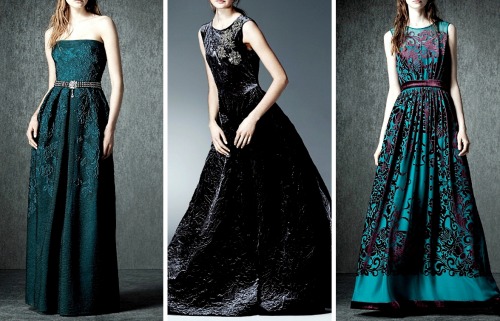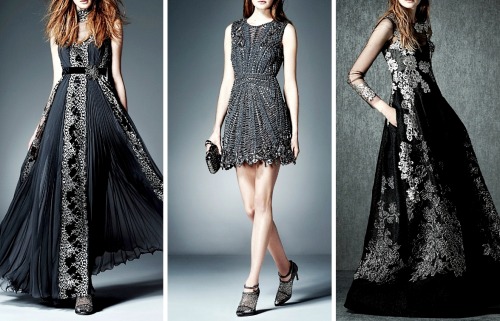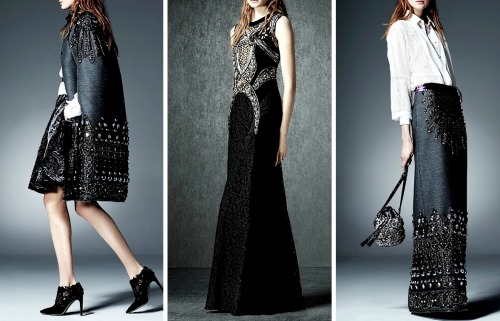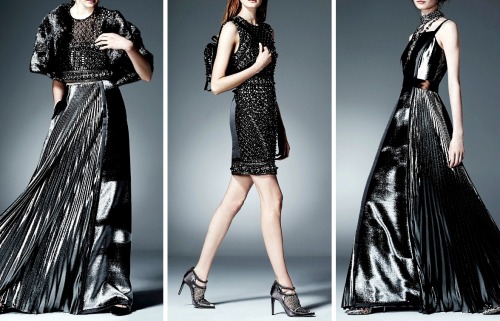Latest Posts by zelo-ref - Page 5



Bummed that I didn’t manage to photograph (so sorry for the bad quality) this bugger of a blade properly but kind of happy (always hard to part from such time consuming projects) that got it sold so fast at Turku Medieval fair. Have to start crafting more blades as soon as possible.










Samurai Top Image Row 2 (Left), 3, and 4 Row 2 (Right) Row 5: Left, Right Row 6: Left, Right
I've been thinking about this for a while, but how effective is full plate armour? Was it actually a good way to defend yourself?
Short Answer: Yes.
Here’s a general rule: People in the past were ignorant about a lot of things, but they weren’t stupid. If they used something, chances are they had a good reason. There are exceptions, but plate armor is not one of them.
Long Answer:
For a type of armor, no matter what it is, to be considered effective, it has to meet three criteria.
The three criteria are: Economic Efficiency, Protectiveness, and Mobility.
1. Is it Economically Efficient?
Because of the nature of society in the Middle Ages, what with equipment being largely bring-it-yourself when it came to anybody besides arrowfodder infantry who’d been given one week of training, economic efficiency was a problem for the first couple of decades after plate armor was introduced in France in the 1360s. It wasn’t easy to make, and there wasn’t really a ‘science’ to it yet, so only the wealthiest of French soldiers, meaning knights and above, had it; unless of course somebody stole it off a dead French noble. The Hundred Years War was in full swing at the time, and the French were losing badly to the English and their powerful longbows, so there were plenty of dead French nobles and knights to go around. That plate armor was not very economically efficient for you unless you were a rich man, though, it also was not exactly what we would call “full” plate armor.

Above: Early plate armor, like that used by knights and above during the later 1300s and early 1400s.


Above: Two examples of what most people mean when they say “full” plate armor, which would have been seen in the mid to late 1400s and early 1500s.
Disclaimer: These are just examples. No two suits of armor were the same because they weren’t mass-produced, and there was not really a year when everybody decided to all switch to the next evolution of plate armor. In fact it would not be improbably to see all three of these suits on the same battlefield, as expensive armor was often passed down from father to son and used for many decades.
Just like any new technology, however, as production methods improved, the product got cheaper.

Above: The Battle of Barnet, 1471, in which everybody had plate armor because it’s affordable by then.
So if we’re talking about the mid to late 1400s, which is when our modern image of the “knight in shining armor” sort of comes from, then yes, “full” plate armor is economically efficient. It still wasn’t cheap, but neither are modern day cars, and yet they’re everywhere. Also similar to cars, plate armor is durable enough to be passed down in families for generations, and after the Hundred Years War ended in 1453, there was a lot of used military equipment on sale for cheap.
2. Is it Protective?
This is a hard question to answer, particularly because no armor is perfect, and as soon as a new, seemingly ‘perfect’ type of armor appears, weapons and techniques adapt to kill the wearer anyway, and the other way around. Early plate armor was invented as a response to the extreme armor-piercing ability of the English longbow, the armor-piercing ability of a new kind of crossbow, and advancements in arrowhead technology.

Above: The old kind of arrowhead, ineffective against most armor.

Above: The new kind of arrowhead, very effective at piercing chainmaille and able to pierce plate armor if launched with enough power.

Above: An arrow shot from a “short” bow with the armor-piercing tip(I think it’s called a bodkin tip) piercing a shirt of chainmaille. However, the target likely would have survived since soldiers wore protective layers of padding underneath their armor, so if the arrow penetrated skin at all, it wasn’t deep. That’s Terry Jones in the background.

Above: A crossbow bolt with the armor piercing tip penetrating deep through the same shirt of chainmaille. The target would likely not survive.

Above: A crossbow bolt from the same crossbow glancing off a breastplate, demonstrating that it was in fact an improvement over wearing just chainmaille.
Unfortunately it didn’t help at all against the powerful English longbows at close range, but credit to the French for trying. It did at least help against weaker bows.
Now for melee weapons.
It didn’t take long for weapons to evolve to fight this new armor, but rarely was it by way of piercing through it. It was really more so that the same weapons were now being used in new ways to get around the armor.


Above: It’s a popular myth that Medieval swords were dull, but they still couldn’t cut through plate armor, nor could they thrust through it. Your weapon would break before the armor would. Most straight swords could, however, thrust through chainmaille and anything weaker.
There were three general answers to this problem:
1. Be more precise, and thrust through the weak points.


Above: The weak points of a suit of armor. Most of these points would have been covered by chainmaille, leather, thick cloth, or all three, but a sword can thrust through all three so it doesn’t matter.
To achieve the kind of thrusting accuracy needed to penetrate these small gaps, knights would often grip the blade of their sword with one hand and keep the other hand on the grip. This technique was called “half-swording”, and you could lose a finger if you don’t do it right, so don’t try it at home unless you have a thick leather glove to protect you, as most knights did, but it can also be done bare-handed.


Above: Examples of half-swording.
2. Just hit the armor so fucking hard that the force carries through and potentially breaks bones underneath.
Specialty weapons were made for this, but we’ll get to them in a minute. For now I’m still focusing on swords because I like how versatile the European longsword is.

Above: A longsword. They’re made for two-handed use, but they’re light enough to be used effectively in one hand if you’d like to have a shield or your other arm has been injured. Longswords are typically about 75% of the height of their wielders.
Assuming you’re holding the sword pointing towards the sky, the part just above the grip is called the crossguard, and the part just below the grip is called the pommel. If you hold the sword upside-down by the blade, using the same careful gripping techniques as with half-swording, you can strike with either the crossguard or the pommel, effectively turning the sword into a warhammer. This technique was called the Murder Stroke, and direct hits could easily dent plate armor, and leave the man inside bruised, concussed, or with a broken bone.

Above: The Murder Stroke as seen in a Medieval swordfighting manual.
Regular maces, hammers, and other blunt weapons were equally effective if you could get a hard enough hit in without leaving yourself open, but they all suffered from part of the plate armor’s intelligent design. Nearly every part of it was smooth and/or rounded, meaning that it’s very easy for blows to ‘slide’ off, which wastes a lot of their power. This makes it very hard to get a ‘direct’ hit.
Here come the specialized weapons to save the day.

Above: A lucerne, or claw hammer. It’s just one of the specialized weapons, but it encompasses all their shared traits so I’m going to only list it.
These could be one-handed, two-handed, or long polearms, but the general idea was the same. Either crack bones beneath armor with the left part, or penetrate plate armor with the right part. The left part has four ‘prongs’ so that it can ‘grip’ smooth plate armor and keep its force when it hits without glancing off. On the right side it as a super sturdy ‘pick’, which is about the only thing that can penetrate the plate armor itself. On top it has a sharp tip that’s useful for fighting more lightly armored opponents.
3. Force them to the ground and stab them through the visor with a dagger.
This one is pretty self-explanatory. Many conflicts between two armored knights would turn into a wrestling match. Whoever could get the other on the ground had a huge advantage, and could finish his opponent, or force him to surrender, with a dagger.
By now you might be thinking “Dang, full plate armor has a lot of weaknesses, so how can it be called good armor?”
The answer is because, like all armor is supposed to do, it minimizes your target area. If armor is such that your enemy either needs to risk cutting their fingers to target extremely small weak points, bring a specialized weapons designed specifically for your armor, or wrestle you to the ground to defeat you, that’s some damn good armor. So yes, it will protect you pretty well.

Above: The red areas represent the weak points of a man not wearing armor.
Also, before I move on to Mobility, I’m going to talk briefly about a pet-peeve of mine: Boob-plates.
If you’re writing a fantasy book, movie, or video game, and you want it to be realistically themed, don’t give the women boob-shaped armor. It wasn’t done historically even in the few cases when women wore plate armor, and that’s because it isn’t as protective as a smooth, rounded breastplate like you see men wearing. A hit with any weapon between the two ‘boobs’ will hit with its full force rather than glancing off, and that’ll hurt. If you’re not going for a realistic feel, then do whatever you want. Just my advice.

Above: Joan of Arc, wearing properly protective armor.
An exception to this is in ancient times. Female gladiators sometimes wore boob-shaped armor because that was for entertainment and nobody cared if they lived or died. Same with male gladiators. There was also armor shaped like male chests in ancient times, but because men are more flat-chested than women, this caused less of a problem. Smooth, rounded breastplates are still superior, though.
3. Does it allow the wearer to keep his or her freedom of movement?
Okay, I’ve been writing this for like four hours, so thankfully this is the simplest question to answer. There’s a modern myth that plate armor weighed like 700 lbs, and that knights could barely move in it at all, but that isn’t true. On a suit of plate armor from the mid to late 1400s or early 1500s, all the joints are hinged in such a way that they don’t impede your movement very much at all.
The whole suit, including every individual plate, the chainmaille underneath the plates, the thick cloth or leather underneath the chainmaille, and your clothes and underwear all together usually weighed about 45-55 lbs, and because the weight was distributed evenly across your whole body, you’d hardly feel the weight at all. Much heavier suits of armor that did effectively ‘lock’ the wearer in place did exist, but they never saw battlefield use. Instead, they were for showing off at parades and for jousting. Jousting armor was always heavier, thicker, and more stiffly jointed than battlefield armor because the knight only needed to move certain parts of his body, plus being thrown off a horse by a lance–even a wooden one that’s not meant to kill–has a very, very high risk of injury.
Here’s a bunch of .gifs of a guy demonstrating that you can move pretty freely in plate armor.



Above: Can you move in it? Yes.
Here are links to the videos that I made these .gifs from:
https://www.youtube.com/watch?v=vi757-7XD94
https://www.youtube.com/watch?v=NhWFQtzM4r0
https://www.youtube.com/watch?v=5hlIUrd7d1Q

Throwback Thursday, me in my wedding gown (of own design) 2014 :) Photo: https://www.facebook.com/ylphoto/?fref=ts Hair & makeup: https://www.facebook.com/ProfessionalLooks.nl/?fref=ts For all about my designs, see: www.somniaromantica.com ^^

DIY Outlander Inspired Cosplay Pattern Series by American Duchess for Simplicity
If you’ve been looking for affordable sewing patterns for 18th century Cosplay dresses or a pattern for a corset, this is the post for you. These are patterns for beginners, and all notions needed for these garments can be found at fabric stores.
The pattern sizes range from Size 6 to Size 22.
What’s included in the 2 patterns?
With the restrictions on the patterns - things like tissue size and complexity/length of instructions - we came up with two pattern packets that work together: the underpinnings packet with a chemise, bum pad, and stays; and the ensemble packet with a gown, petticoat, bodice, and stomacher.
You can find the American Duchess’ post on her Outlander Inspired Cosplay Patterns here.
Also, the Amercian Duchess’ now has a series of Outlander Pattern Hacks posted here. The pattern hack series already has several posts (including one on corset stays), and will eventually include:
Hand-stitched eyelets instead of metal grommets
Creating robings and closing the bodice with pins
Interior lacing, buttons, and other bodice closures
Drafting and applying a 1740s winged cuff
Redrawing bodice seams and stays boning patterns
Drafting skirting for the bodice, to create a jacket
Extending the front edges for a center front closure
Setting sleeves with the 18th century method
18th c. hand stitching techniques for finishing edges and sewing seams
Fitting through the side back seams the mantua maker’s way
Proper silhouette through bum pads, petticoats, and more petticoats
Binding and facing the stays with chamois leather
Proper materials - wool, linen, cotton, silk
How the heck to get dressed
What’s Included in the Outlander Simplicity Patterns?
Simplicity Pattern 8161 can be found here. The pattern costs $12.57 and consists of:
Misses’ 18th century highland costumes includes outfits in two styles: the first is a gown with stomacher and petticoat, and the second is a bodice with petticoat and stomacher.
You can find the FREE CROCHET Pattern for the Highlander Crochet Cowl here.






Simplicity Pattern 8162 can be found here. This pattern also costs $12.57 and consists of:
chemise, bum pad, and lined corset.










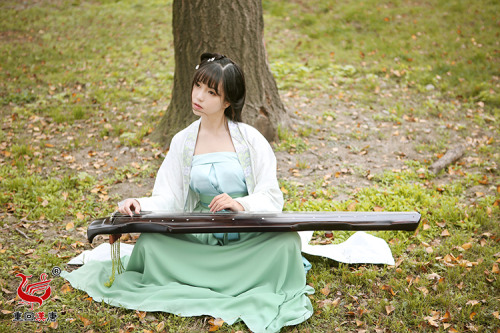
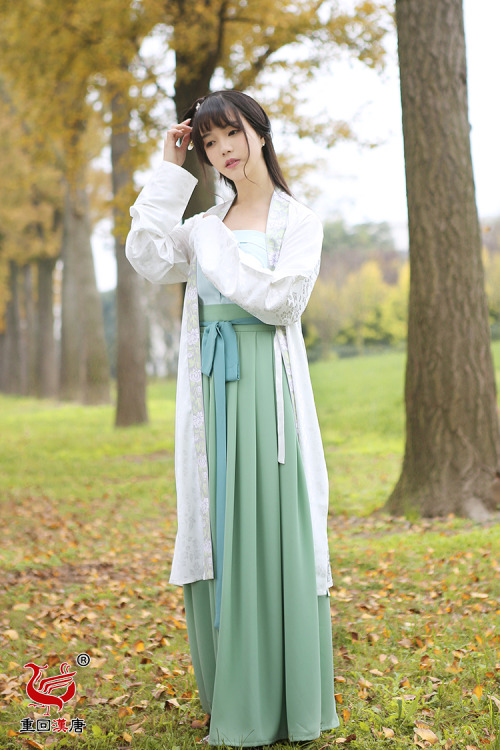


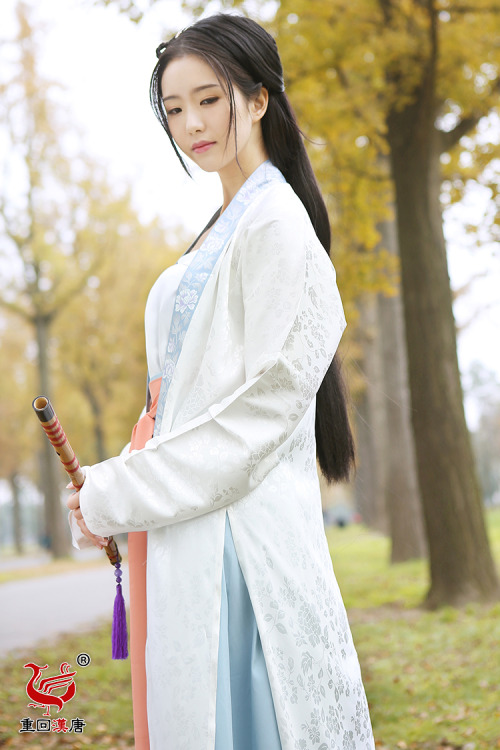
(via 重回汉唐汉服女装实体店白蓝绿色褙子抹胸襦裙套装轻萝非古装-淘宝网)
重回汉唐


At-home gown, 1887-89
From the FIDM Museum
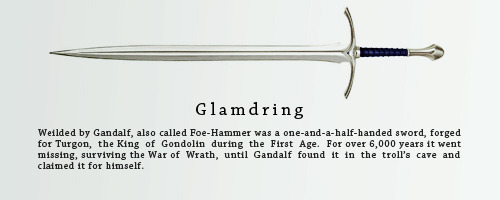



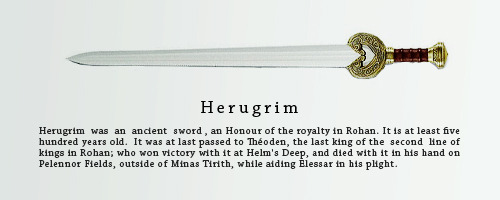

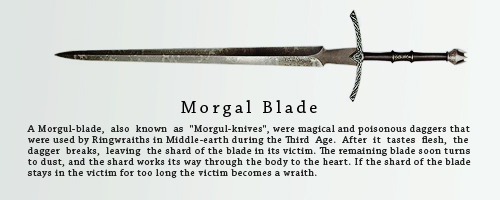
LotR + Blades
Next

Game of Thrones + Costume Details | ©




Evening dress ca. 1930
From Kerry Taylor Auctions




teal armband
spiral armband
dragonfly armband
golden leaf armband
Here is where you can find more amazing products from etsy.
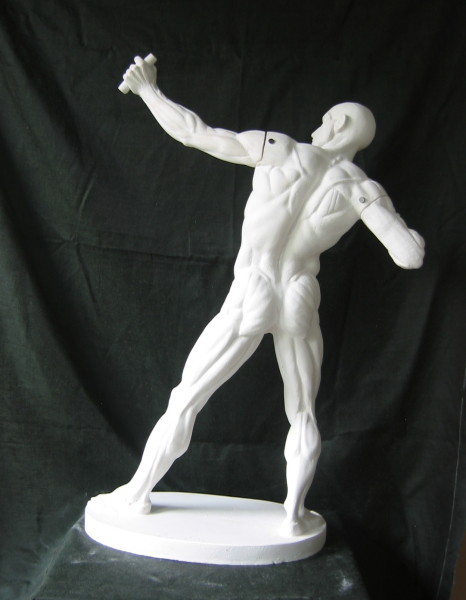

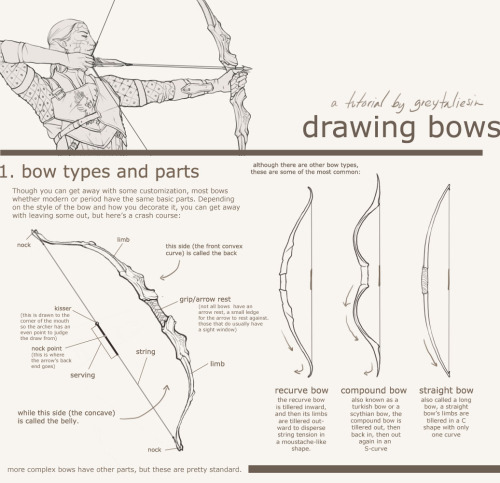
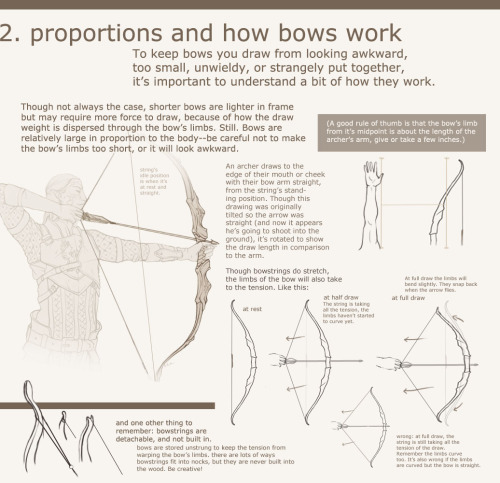
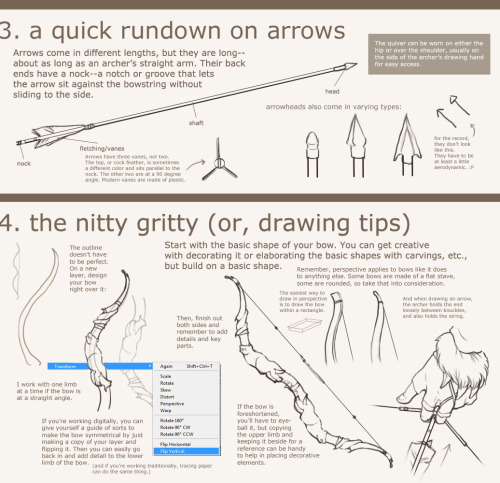
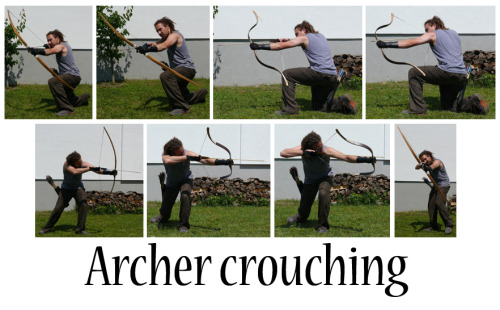
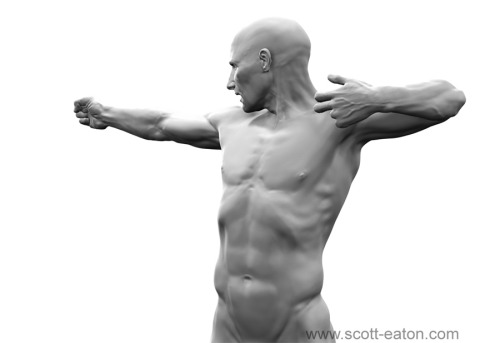
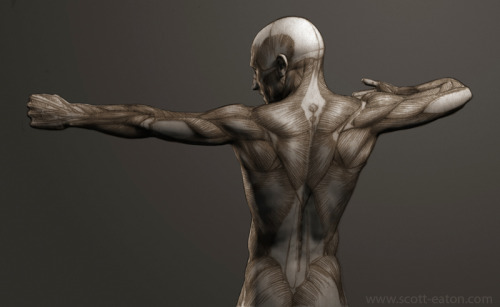
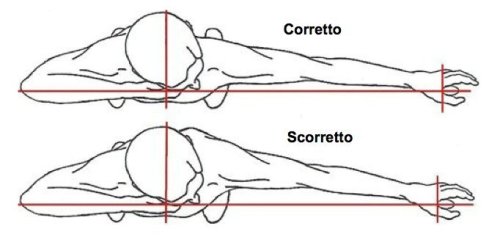
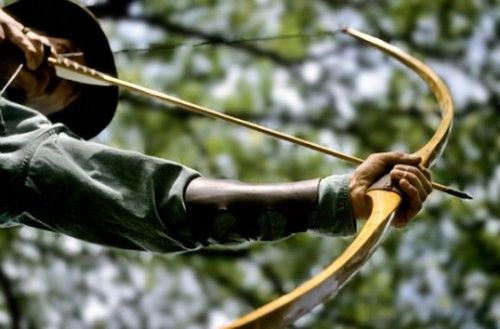
A workable fuck-ton of male archery references (per request).
[Please note that the top two images of the white statues are for weaker bows; typically, the bow will have a stronger pull weight. The front arm would be fully extended and straight, and the hand gripping the arrow would not be pinching the arrow itself.]
HOW NOT TO DRAW ARCHERY: AN ART TUTORIAL.
DISCLAIMER: I was going to make this “how to draw archery”, but that would probably have taken the rest of my life. This is all stuff I’ve learned from practicing archery in the past, and the tips I’ve given should translate to many, if not all styles of archery. If you take issue with any of the information given here please contact me, as I’m aware I’m not an expert!
Okay, I’ve seen too many bad drawings of archery online. Most of the time I can overlook it, but I’ve made this guide to address drawings where a) the character would hurt/maim themselves if they shot like that, or b) if you tried to shoot like that, the arrow would just make a sad trajectory to the ground, the aerodynamic equivalent of a “WAH-WAH” on a trumpet.
With this in mind:
POINT ONE: WHY IS YOUR ARM LIKE THAT
If successful archery is about one thing, it is about consistency - being able to make your body take exactly the same stance over and over and over again. Your body is a key part of the weapon, and just as you wouldn’t want a gun that had components that wobbled and shifted, you don’t want your body to.
With this in mind, characters shooting, particularly at full draw (this is when the arm pulling the string is stretched all the way back), should have the arm that is holding the bow straight. Not locked - I’ll get into that - but straight. A straight arm is easy to replicate - a bent arm could be at a different angle each time. Simple as that.
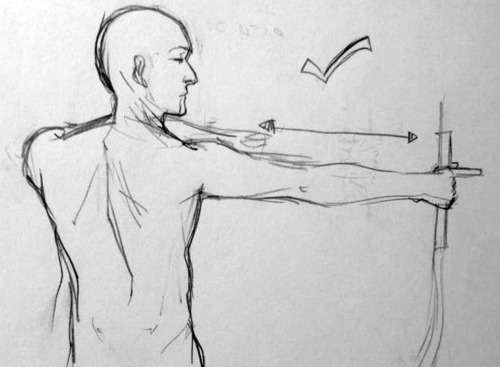
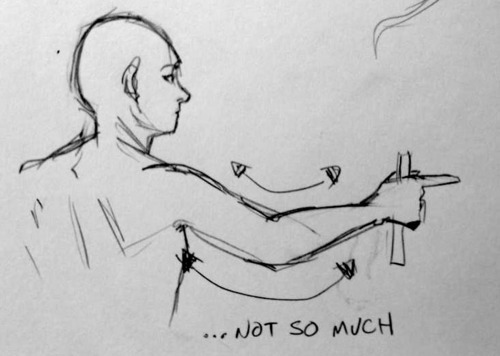
POINT TWO: DON’T SHOOT YOUR TIT OFF
See this diagram
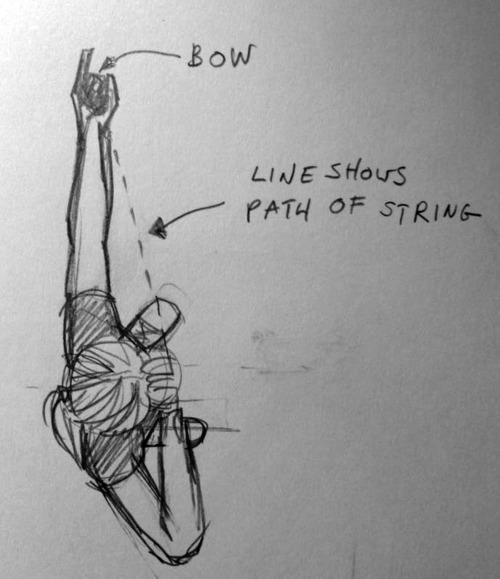
the dotted line is the path the string will take. The string is extremely tight - it has to be for the bow to work. It will therefore move extremely fast. Do you want any part of your body to be in the way of that.
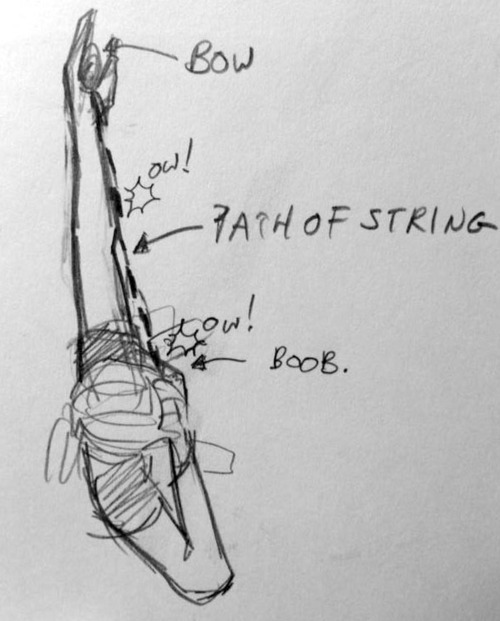
if you have any part of your body (elbows and breasts/pectoral muscles tend to be the worst offenders) in the line of the string, they will get hit. And this will hurt. A LOT. Google “archery bruise” to see how. Yikes. Furthermore, if your arm or chest gets in the way, it’ll knock the arrow off course, and in addition to having sliced your nipple off you’ll have missed your shot too. So KEEP STUFF OUT OF THE PATH OF THE STRING.
side note: this is where the myth of amazons chopping their boobs off came from. Also, why archers sometimes wear chest-guards - this looks like a one-cupped unisex bra. Stylish. Also why archers often wear protective gear called a bracer. This goes on the tender inside of the arm and wrist that might get clipped by the string, not the outside that is nowhere near it.
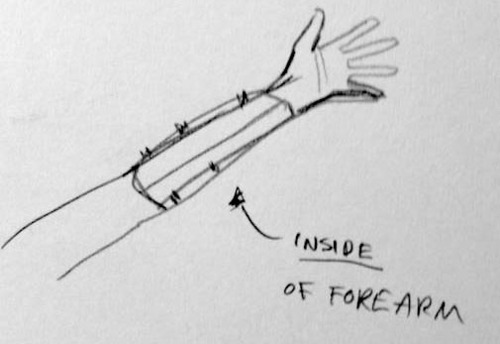
POINT THREE: WHAT ARE YOU DOING WITH YOUR FINGERS STOP THAT
Okay I keep seeing this

Having the fingers clasping the arrow like this makes it highly likely that the pressure from them will send the arrow off-course.
Many modern bows have an arrow rest so you needn’t rest the arrow on your hand at all. If that isn’t the case, it works better to rest the arrow on the first knuckle of the index finger (where it meets the hand). If it’s just being used as a platform, the finger shouldn’t be able to exert enough pressure to make the shot go all over the place. Also you won’t end up shredding your fingers with the fletchings.
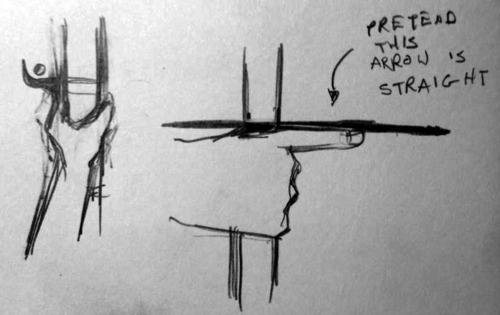
Talking of that…
POINT FOUR: DON’T SLICE YOUR FINGERS OFF
remember what I said earlier about how incredibly taut bowstrings are
imagine pulling that back with your soft fleshy fingers
it is basically like cheesewire through…soft fleshy fingers.
Use protection. Illustrated below are the tab and archery glove, or just go to google or something, stop the madness.

POINT FIVE: PHYSICS DOESN’T WORK LIKE THAT
A strung bow is taut. The body of the bow is pulled by the (very tight) string, making a D shape. An unstrung bow will be straighter.
The tension in the string means a string should always be a straight line. If the bow is drawn, it’s two straight lines.

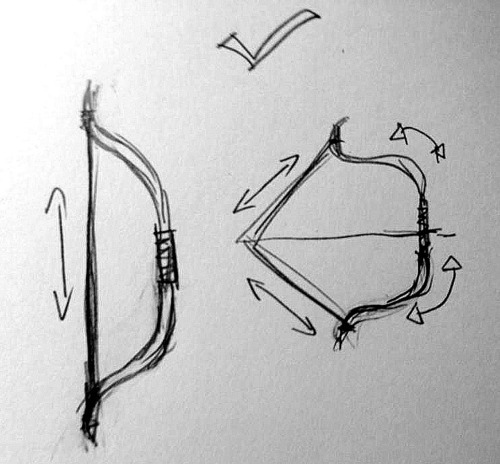
If there is any curve in the string, the arrow will probably fall limply to the floor.
ALSO. When the string is drawn back, it exerts more pressure on the bow, creating that really exaggerated curve. This is where the power comes from. (I think. I am not physics). Basically, if you’re drawing a character at full draw, the string should be straight and the bow should be curved. If the opposite is true something very wrong has happened and you should be sad.
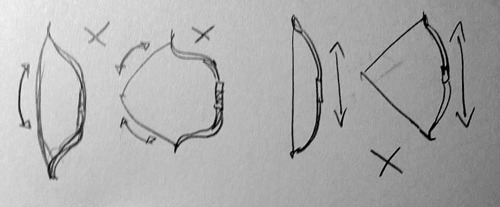
OKAY! I hope this has been helpful, if you have any questions or concerns let me know. And if in doubt, doctor google will help you - look at olympic or professional archers, and see how they’re standing and how their bows behave.
GOOD LUCK DRAWING!


Costume designed by Sandy Powell for Tom Cruise in Interview with a Vampire (1994)
From the collection of Larry McQueen on Pinterest
Teach me how to draw armor!! Pleeaassdee I struggle with this so badly but your armor is always so amazing I just want to see how you make it, show me a tutorial oh my god please i need you
thank you so much!! I…okay!! i’m not particularly good at armour or teaching or well anything really so if anyone wants to point out mistakes or add to this feel free to do so, i’m not sure what part you struggle with so i included shading too? I hope this helps! I’d suggest looking at different medieval armour suits to have a better idea of the parts and shapes but here goes nothing





HERE is a much better explanation with all the layers and a much more realistic approach by perplexingly that your should definitely check out, also their art is fantastic!!
HERE you can find armor parts and if you click around you will see tons of armor reference
good luck!
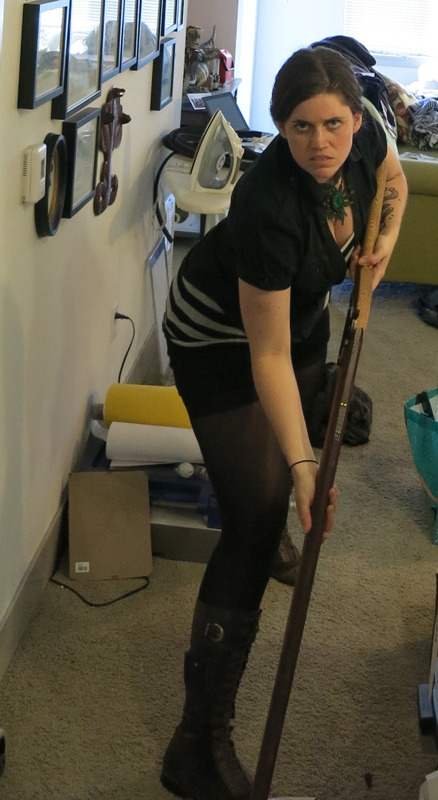

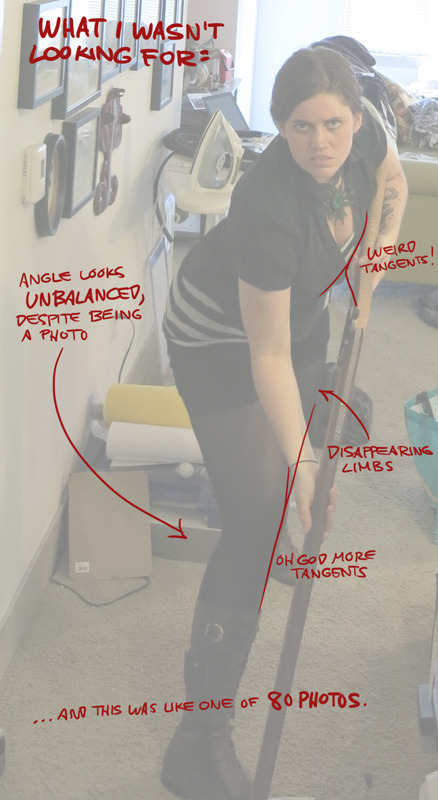


So I was chatting with the lovely Justin Oaksford yesterday, and he casually asked if I used photo reference for my recent Rolemodels piece- not as a bad thing, but because the pose and the camera angle read well. Pretty sure I grinned like an idiot when he brought it up because, goddammit, I’m proud that the work shows! I’ve felt like my work has been somewhat stilted as of late- I could feel myself subconsciously trending towards easier angles, easier poses, easier expressions just because it's slightly less frustrating for my brain to process- so getting that confirmation from a colleague was pretty damn satisfying.
I think there’s a tendency for artists to take pride in being able to draw out of your head, and, while that’s an admittedly important skill, what’s actually important is what that skill implies- it implies that you’ve internalized reference. That you’ve spent so much time looking at the world around you, studying it, drawing from it, breaking it down, that you’ve amassed an extensive mental library that you can draw from. You are Google reborn in the shallow husk of a human being.
But heck, the world’s a big place- what are the chances that you ever get to a point that you’ve internalized all of it? Internalized it AND ALSO are never going to forget it ever? Probably no chance at all. Sorry buddy. So rather than bemoaning the fact that we don’t have impenetrable search engine cyborg brains- yet- you sure as hell better still be using reference to fill in/refresh those empty shelves in your mental library. You shouldn’t have worm-ridden books about dinosaur anatomy from the 60’s in there. Stegosauruses with brains in their tails? CLEAN THAT SHIT OUT.
So my general process for using reference of any sort is:
loose thumbnails and brainstorming. If you have an idea, get that raw thing- unadulterated in it’s potential shittiness- onto paper. Good art is a combination of both instinct and discipline, so you don’t want to entirely discount those lightning strikes of brilliance. Or idiocy. Happens to all of us.
research and reference. Start gathering and internalizing whatever reference is pertinent to your piece- could be diagrams, art, photos, good old-fashioned READIN’, whathaveyou. Please note that this doesn’t mean find one picture of a giraffe- this means find tons of photos of giraffes, read about giraffes, understand giraffes, and learn how to incorporate that knowledge into your art with purpose and intent (Justin uses the word “intent” a lot so I’m stealing it). Don’t blindly copy what you see, but understand how to integrate it in an interesting and informed manner.
studies and practice. Could be lumped in with the previous step, granted, but it’s worth reiterating- if you’re drawing something new, it’s worth doing some studies. You discover things that you wouldn’t otherwise by just staring at them. It’s weird how I’m still learning this- “Gee golly, six-shooters are way easier to draw now that I’ve drawn a ton of them!” Yes wow Claire BRILLIANT. Gold star.
go for the gold. Finally, I’m sure it goes without saying, you integrate all of that research and knowledge into your initial thumbnails. If you learned something about anatomy, or fashion, or color, or butts, now you can drastically improve your original idea with this newfound knowledge. Also, per the images above, this is also your chance to improve on the reference- photos are a fantastic tool, but trust your instincts. Cameras can’t make informed decisions.
…So that’s my soapbox- it’s pretty easy, and it’s totally worth it. Research and reference lets you stand on the shoulders of giants- it lends legitimacy, specificity, and allure to your work that wouldn’t be there if you were just drawing out of your head 100% of the time. To put it simply- it makes your work ownable. It makes you stand out.
It makes you a better artist. :)
-C
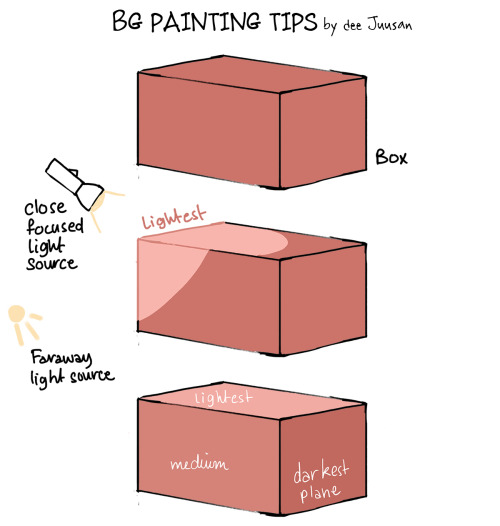
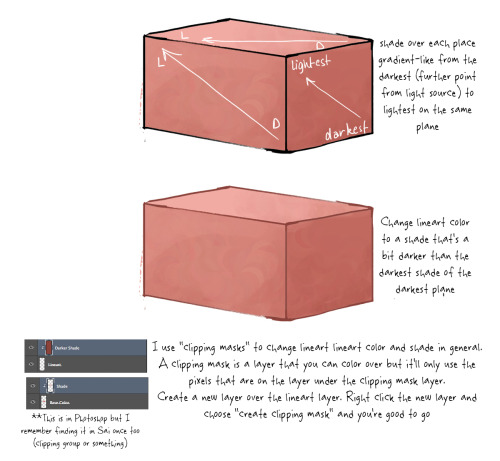
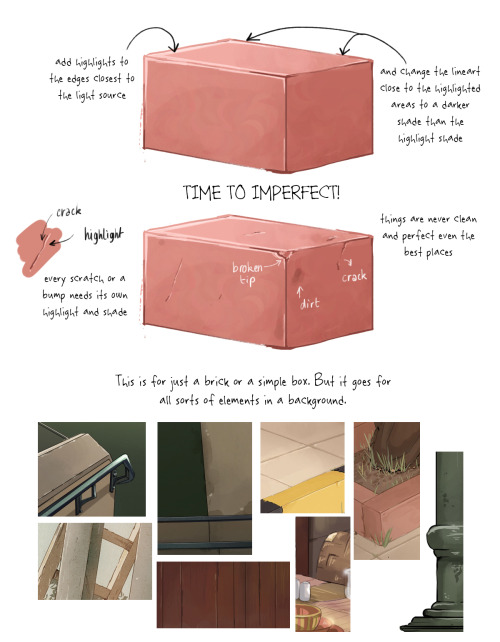
A quick tutorial on how I paint (mostly angular) shaped objects in a BG.










Ghibli Art 1








The World’s Most Beautiful Library Is In Prague, Czech Republic

Balmain F/W 2016 Menswear Paris Fashion Week
















Honeybear Atelier Boz Rolando replicas
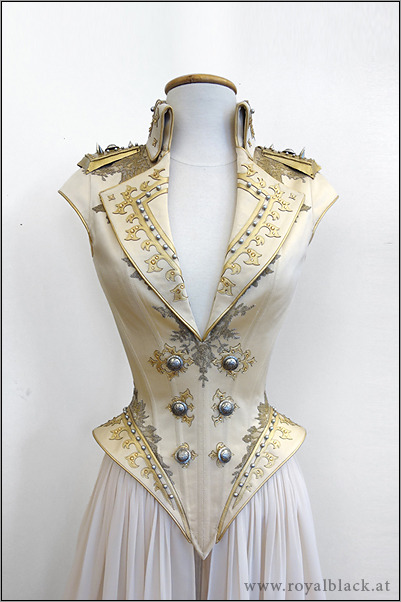
Couture Corset “The Admiral”
“The Admiral” is a uniform inspired corset top with high collar, lapels, spikey epaulettes and semi-transparent detachable skirt pieces. The corset is made from satin and is elaborately decorated with lace appliqué, synthetic leather cutwork, silver beads, Swarovski crystals and metal buttons. The epaulettes are made from sturdy thermoplast and are also decorated with beads, Swarovski crystals and buttons.
(x)


Just wanted to quickly share this great website with fellow writers and roleplayers, because it’s where I find names 100% of the time, hashtag blessed.
Essentially, the homepage has a box you can type a name you like into, then you’ll be presented with lists of male, female and unisex names related it by user votes and a google-like “also searched for…” feature. There are three ways to use this website.
01: RANDOMLY. You don’t have to type a name to begin, you can just click one and keep going until you’re satisfied. 02: BY VIBE. Writing a stereotypical high school cheerleader who feels like a Claire, but isn’t? Search Claire and you’ll get tons of names with a similar feel. This also works with time period names. 03. BY ETHNICITY / NATIONALITY. In my screenshot, you can see I was searching for a name for Avan Jogia. I don’t know about you, but I think their very first suggestion of Ketan is perfect. This can help you make sure you aren’t entirely white washing names for a lack of options on most name lists.
Additionally, you can click the lines beside a name to add it to your favorites list (stored with cookies), so you can organize all your options as you go. Have fun!



























